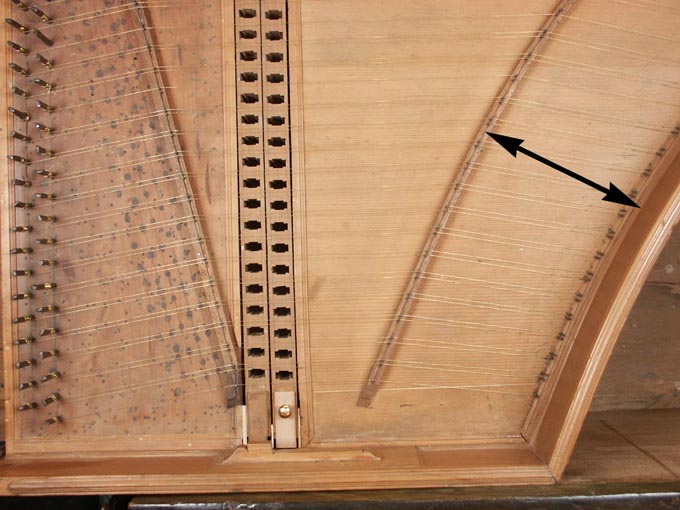N E W 5 - O C T A V E H A R P S I C H O R D S
I N T H E N E A P O L I T A N S T Y L E
Guarracino bridge placement

The arrow in this photograph shows the distance between the line of the bridge pins and the inside of the bentside. This distance is uniform along the entire length of the bridge and is measured to be very close to 6 once = 129.7mm. In the instruments of integral construction this distance is 6 once to the 'virtual' bentside lining which is ½ oncia thick. Therefore this distance is 6½ once to the actual position of the bentside. This large separation between the bridge and the bentside and the bridge and the cutoff bar which runs more-or-less parallel to the bridge positions the bridge out in the middle of the soundboard where it can vibrate freely and unhindered by the solid unyeilding case components near it. The sound can therefore develop in a way that is completely uncharacteristic of Roman instruments, for example, where the bridge is usually placed very close to the bentside and therefore the sound is particularly tight, constrained and weak, even when the instruments are voiced loudly. No other instruments were made in the Italian peninsula which had the bridge removed from the bentside by such a large distance except, notably, those instruments made in Florence (by Stefano Bolcioni, for example) in the Neapolitan style which was particularly appreciated at the Medici court.
This instrument which is pictured above and which has been attributed by me to Onofrio Guarracino, belongs to Fernanda Giulini, Milan and the photograph is reproduced here with her kind permission.
